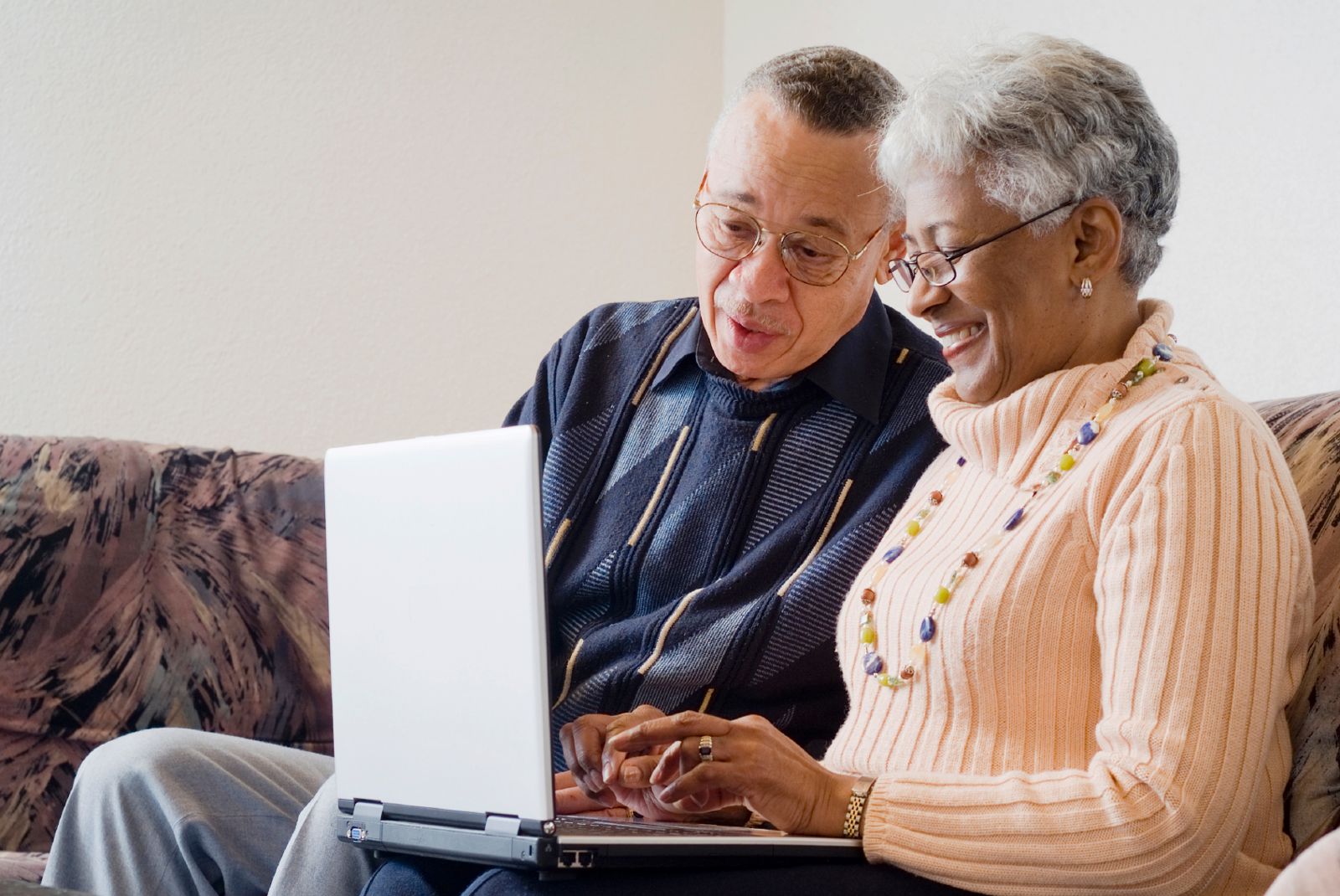
The Digital Senior: Technology Pros and Cons
Technology for seniors is improving many aspects of their lives. There are technology tools that make life more convenient and also help elderly people stay more connected to their families. Even with such advantages, it’s important to be aware that there are downsides of technology usage as well. Data shared or transmitted online can fall into the wrong hands. This unfortunately makes all consumers—not just seniors—vulnerable to two key risks: identity theft and loss of privacy.
Latest Technological Trends
New technological advancements occur every year, with many trends having positive implications for seniors. Laurie M. Orlov, Principal Analyst for Aging in Place Technology Watch, identified several key trends worth noting in her 2017 Market Overview, among them:
AI-enabled voice-first interfaces (such as Siri, Google Home, Amazon Alexa, Cortana, etc.) which act as mini-service providers.
The Internet of Things—also known as IoT—featuring smart devices like wall plugs, thermostats, light bulbs and even pet feeders, managed through configurable home hubs like Google Home and Amazon Echo.
Continued experimentation of robotics and virtual reality, though widespread use of care-related robots in the home or senior living communities has yet to happen.
On that latter point, there is some early-adoption usage of such technology in senior living communities, such as Brookdale. Additionally, robotic pets are growing popularity in senior communities and private homes. One such example of this technology that Orlov finds promising is Hasbro’s Joy For All Pets, a line of electronic companion cats and dogs.
“These are stuffed animals that have sensors in them that can sense that they’re being touched and respond by purring or barking or moving or rolling over,” says Orlov. “They are not that expensive, and they’re becoming quite popular in senior living communities.”
Beware of the Downsides
Unfortunately, with the upside of technology for seniors come several downsides. One of the most persistent is the rise of scammers whose goal is to steal consumers’ identity and abscond with their money.
Be aware that no matter what your age, you can be the victim of identity theft. “These identity thieves who are trying to scam lots and lot of money are not screening for age,” says Orlov. “They’re picking up big data sets, whether it’s from insurance companies or others.”
Various examples of high-profile security breeches have occurred with large corporations such as Target, Yahoo, and health insurer Anthem. While the risk of such a security breech cuts across all ages, Orlov observed that seniors might be less capable of shutting down the problem than those in other age brackets. “They’re more vulnerable to not being able to mitigate the problem and protect themselves,” she says.
Studies do, in fact, show that seniors are less tech-savvy than other generations (though their adoption of technology is deepening in recent years). The National Council on Aging indicates that slower speed of technology adoption among older people makes them easier targets for various online scams, such as pop-up browser windows that simulate virus-scanning software but in actuality is itself a virus or email messages that appear to be from a legitimate company or financial institution but are actually a phishing scam to get seniors to enter their personal information.
Solutions, according to Orlov, are to be extra diligent about sharing your data, whether it’s your Social Security number or credit card information. “There’s always a risk if you’re providing identifying data that could be used by identity thieves,” she says.
For seniors, having family members available to verify the legitimacy of the request for information is one solution. The National Council of Aging offers some general tips, such as never buy from an unfamiliar company and never give personal information (credit card, banking account, Social Security, etc.) over the phone unless you initiated the call.
Another downside to technology is the potential loss of privacy. As an example, one technological advancement that has implications for the senior market is the ability to check in on a loved one remotely. The advantage is that seniors have more interaction with family members who live a far distance away. The disadvantage is that “checking in” on a loved one could come across as monitoring.
“That whole category (of technology) launched in 2007, and it’s a big problem unless it has a social element that allows the senior to engage with a family member,” Orlov says. “Just monitoring them is really a negative. No one wants to be monitored without getting some benefit out of it.”
Orlov cited several ways that family members can use technology to share a social experience with their aging loved one—for instance, getting together for a group video chat or sharing a YouTube video of an important family event.
A word of caution from Orlov: Share that YouTube video via another means besides Facebook. That way, you’ll avoid the auto-play feature, which if it is not disabled can cause your loved one to exceed data limits and lead to expensive overage charges from their cell phone provider.
Looking Ahead
Looking beyond 2017, Orlov foresees broader use of aging-in-place technologies. As she wrote in her most recent Market Overview: “Some new higher-end senior housing developers are pre-wiring housing with broadband, security monitors, tablets and motion sensors.”
With the increased demand brought on by aging baby boomers, Orlov predicts that senior housing will be upgraded or retrofitted to meet their needs. “Boomers who will remain in their homes expect home networks, web cameras, and voice-activated security for personalized emergency response,” she says, “and vendors will leverage these to sell them more sophisticated and connected applications.”


